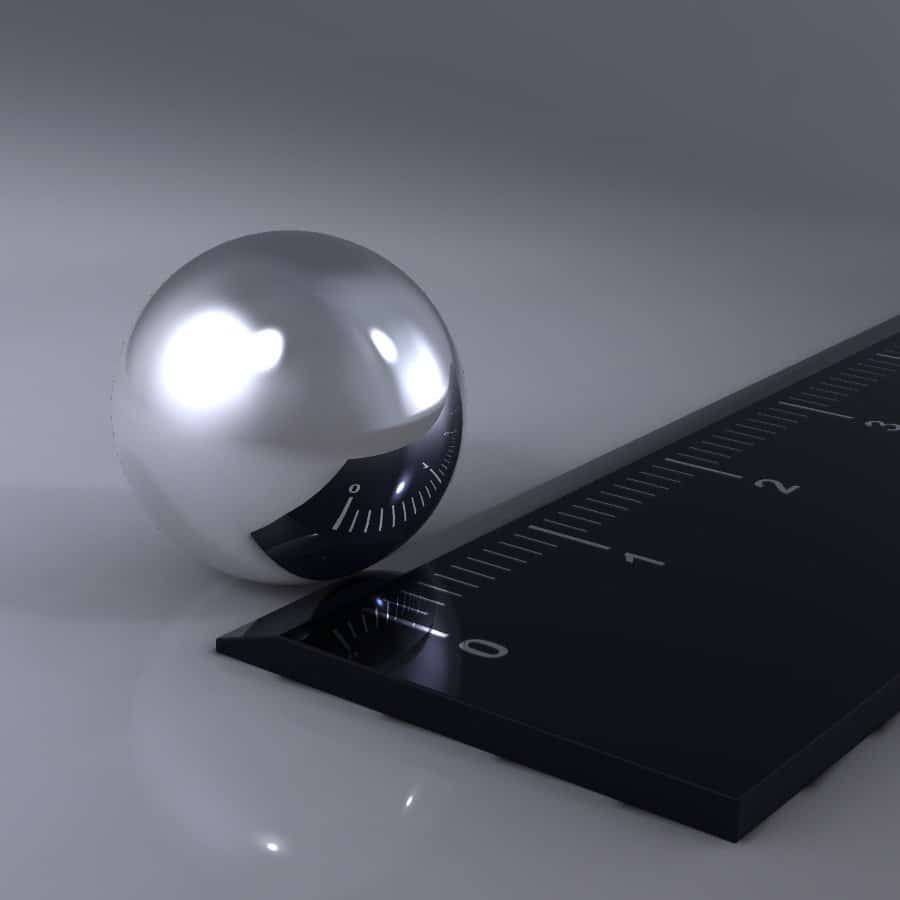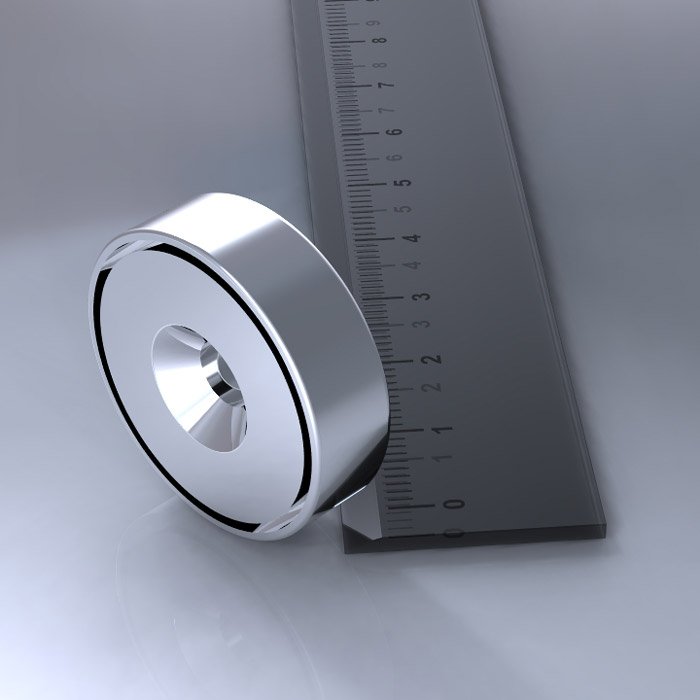Many people, when they hear the word Magnet the classic Horseshoe magnet in the head, in which the two poles are arranged quasi parallel next to each other with an air gap in between. In this air gap as well as on the right and on the left outside of the poles the characteristic Magnetic field.
Let's use Magnets In our everyday life, for example, for the well-known magnetic pinboard or magnetic board on the wall, these are usually round, disc-shaped. In industry, however, many other types of magnets are used, for example special ring magnets or bar magnets.
As we can see, there is a whole range of different types of magnets, the most important of which we will take a closer look at below.
Rod magnets
As the name suggests, bar magnets are rod-shaped or elongated. Their poles are therefore exactly opposite each other, each end of the rod represents a pole. The cross-section of a bar magnet can be cylindrical or cuboidal. A characteristic of the bar magnet is that it has no attractive force in its centre - here the forces of the two poles cancel each other out, so to speak.
It is important to know that the classic horseshoe-shaped magnet is basically nothing more than a bent bar magnet. And also the disc magnets are only a modification of the design of a conventional bar magnet, where the radius is larger than the height of the cylinder (the base). This means that the poles of a disc magnet are located exactly where they are on a bar magnet - on the top and bottom.

Purpose
Depending on their size and material, bar magnets can be used for many different purposes. In industry, however, they are used less frequently than other types of magnets. Short bar magnets and their offshoots, the disc magnets, can be used as fastening elements for pin boards, but they are also used in headphones, loudspeakers, etc. Longer bar magnets, on the other hand, are very suitable for physics experiments. They are also used in the field of electromagnetism as cores for electromagnetic coils.

Permanent magnets
The term permanent magnet does not refer to any particular design of a Magnets but any type of magnet that does not lose its magnetic property at some point. They must therefore be made of a magnetically hard material, for example alloy steel, Nickel, Neodymium etc.
Most Permanent magnets are generated by the action of an existing magnetic field on a ferrimagnetic material. Once the material is permanently magnetized, it exerts an attraction on all ferromagnetic materials (e.g. iron) and on ferrimagnetic materials (ferrites). The attraction occurs between unlike poles, like poles repel each other.
In our everyday lives and in science and industry, permanent magnets are used in countless different places. They serve, for example, as closures for cabinet doors, but are also used in various mechanical and electrical devices such as headphones, loudspeakers or TV sets.

SuperMagnets
They have caused a sensation in recent years, the so-called super magnets. These are particularly strong magnets that are made from newly developed, innovative materials. The best-known of these materials is neodymium. The production of such magnets was made possible by new sintering processes developed in the 1980s.
Today, super magnets are still made of neodymium, but this is an alloy to which iron and boron are additionally added (chemical designation Nd2F14B). This allows the material properties to be improved even further. The sintering process required to produce the alloy was developed and patented in the USA by General Motors in cooperation with the Japanese company Sumitomo. The materials are ground into powder, magnetized in the process and then reassembled (sintered) under heat and high pressure. In the process, the crystals contained in the alloy align themselves magnetically and form a particularly strong magnetic field.
What are super magnets used for?
In the meantime, the super magnets can be purchased in many shops and in specialized online shops. But they are also increasingly used in industry. Here are some examples:
Where huge magnets were used in large power generators in earlier times, super magnets are increasingly being used today. These bring with them numerous advantages. They are simpler and therefore cheaper to manufacture and, above all, lighter. This means that power generators can be manufactured much more compactly with the same output. This saves space and therefore money. Wind turbines are a practical example of the use of super magnets in power generators.
Lightweight
Lightweight construction is playing an increasingly important role in many areas of our modern society, for example in automotive engineering, but also in aircraft, wind turbines, real estate, and so on. With the help of super magnets, connections in lightweight construction can be realised much more easily, and they can usually be released again without leaving any residue.
Magnets have always been used in electric loudspeakers to transmit sound. The new super magnet technology makes it possible to build speakers much smaller than before. Perhaps you still remember the huge, old-fashioned loudspeaker boxes that used to take up a lot of space in the living room at home. Today, a small space on the shelf is enough to accommodate the speakers. And yet these speakers offer just as much power and therefore sound as a conventional, much larger specimen, in some cases they are even better and more powerful.
Ring magnets
The special feature of ring magnets is the alignment of the north and south poles on a flat circular surface. This is also referred to as axial magnetisation. Basically, ring magnets can be used in just as many different ways as bar, disc or horseshoe magnets. In addition, ring magnets are also used in medicine, especially in naturopathy and alternative medicine. They can be comfortably placed on many parts of the body and develop their magnetic field particularly evenly and gently due to the special design.

Ferrite magnets
When talking about the well-known, conventional magnets made of alloyed iron or steel, these are often also called Ferrite magnets. They are still used today in many areas, both in the private sphere and in industry and science. And they offer numerous advantages over the stronger magnets made of neodymium and the like. For example, they are much cheaper to buy. In addition, they can be heated (up to 250 degrees), are rust-resistant and are therefore also suitable for use outdoors, in the sauna, etc. We can use simple ferrite magnets for experimenting, handicrafts and various hobbies, and they also serve us very well in everyday life as refrigerator magnets, etc.
